GYLT is a game I admire more than I enjoyed, though that’s mostly down to me being an older, jaded survival-horror fan, and not the target demographic.
I say that as GYLT feels like the perfect “gateway game” into a resurgent survival-horror genre, drawing on inspiration from Silent Hill, Alan Wake, and Resident Evil for its level design, gameplay loop, and aesthetics. Unlike those games, it’s clearly designed for a younger teen audience, with a narrative centred on the impact of bullying and gameplay mechanics that feel incredibly polished, but also streamlined and accessible to a fault.
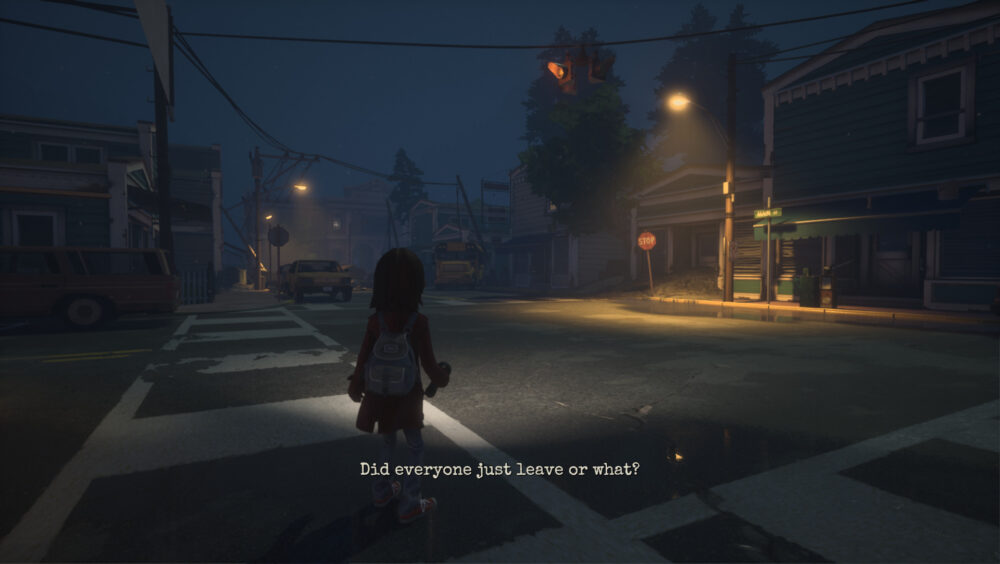
Welcome to Silent Hill Bethelwood
Events kick off when protagonist Sally is heckled and run off the road one night by another group of children while putting up posters for her missing cousin Emily. It’s been a month, interest is waning, and the local bullies have redirected their attention towards her – intimating she must have had a part to play in Emily’s disappearance. A mysterious meeting with an elderly stranger and one cable car ride later, Sally finds herself in a derelict and monster-infested version of her home town. She spots Emily through the upper floor windows of the school building and heads inside to find her despite the obvious danger.
It’s an all too common set-up but GYLT is not trying to buck trends. Instead, its core elements can feel like facsimiles of other survival-horror games, albeit with the mechanics streamlined and graphic content toned down for a younger audience. Now that said, it’s still a tense game that features a combination of psychological- and paranormal-horror elements, with a handful of jump-scares used infrequently enough that they felt effective rather than cheap.
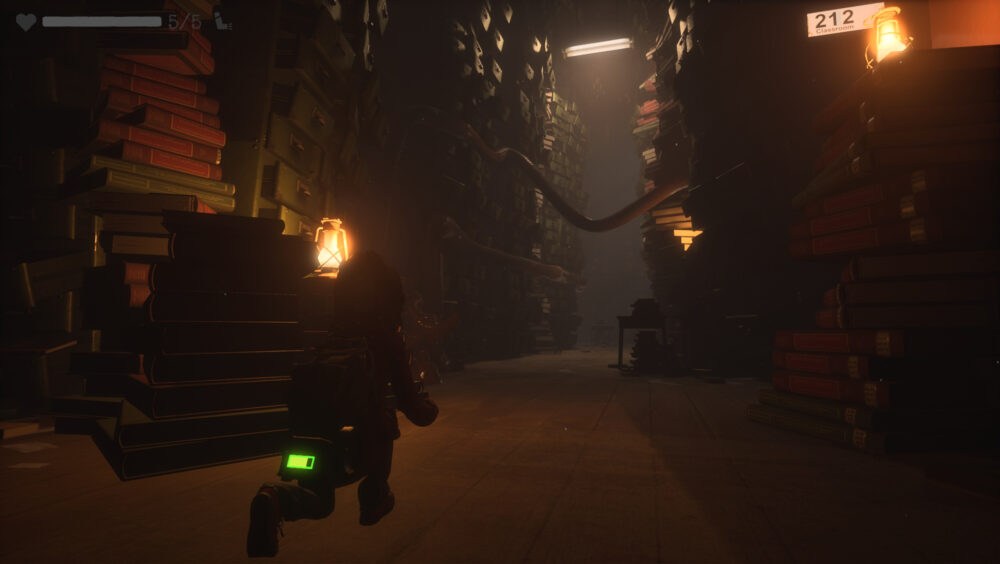
Streamlined Survival-Horror
For veteran players, this makes for a game that feels well-crafted and technically polished, but also too familiar, directed, and predictable. However, for younger players or those new to the genre, it’s a great way to learn the ropes before tackling more complex and less forgiving games like the Resident Evil remakes, Alan Wake and Control, or The Evil Within and its sequel.
You see, GYLT not only teaches many basic survival-horror mechanics – think methodical exploration, resource management, and selective engagements – it also features traditional level design and puzzle types, along with common visual indicators and audio cues used to inform the player.
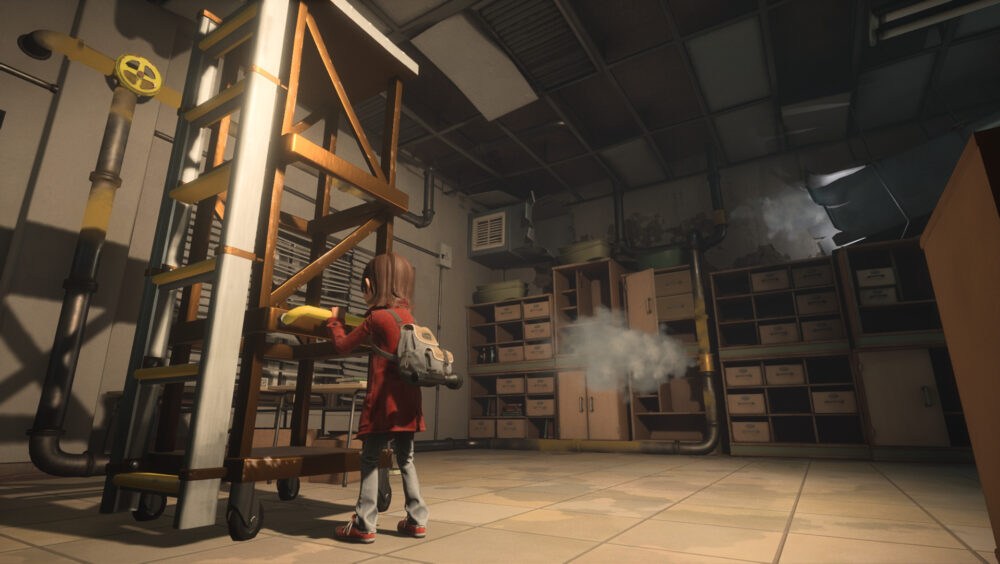
You explore abandoned school grounds and gloomy multi-story buildings, with your route controlled by a mix of logical and supernatural barriers that require misplaced keys or specific gear to overcome. There are puzzles that test spatial awareness, pattern recognition, and sequential inputs: such as pushing around block-like objects to clear path, turning valves in the correct sequence, throw cans at distant switches, rotating grid pieces to connect a current, and splitting your torch beam through crystals to hit multiple targets at once.
You’ll also spot many level design tropes. Chest high objects are both impossible to clamber over and provide perfect cover; strategically-placed light sources and yellow markings always indicate the correct path; and any room off the critical path contains a collectible of some sort. Some of these collectibles are even essential for the best ending but, in the name of accessibility, you can find an object early on that reveals their location and the map automatically populates with objective markers, locked doors, and pick-ups.
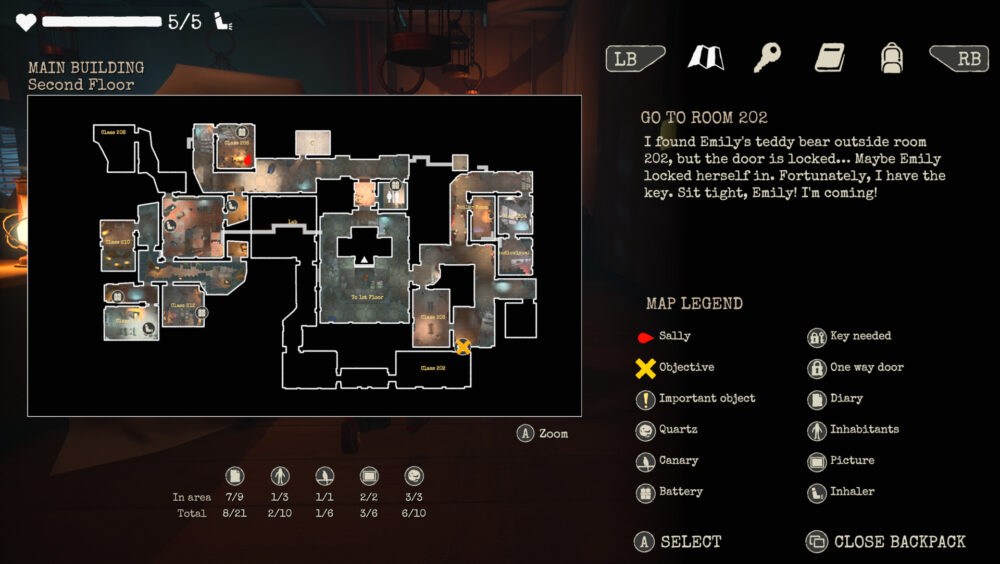
When it comes to stealth and combat, GYLT reinforces many basics like staying crouched and out of the light, observing simple patrol paths, using distractions, and timing your movement. You’re encouraged to sneak behind enemies to give them a surprise torch-enema; or you can fall back on using a focussed torch beam to destroy glowing weak spots if things go wrong.
Even if you play reckless, your torch has a rapidly-recharging flash function that stuns multiple enemies; resources like battery charges and inhalers (your health item) are abundant; basic monsters do little damage and are easy to flee from; while hiding spots – usually a vent of some sort – are commonplace. As a result, it’s the puzzle-like boss encounters the present the only real threat and even they can be defeated without taking a hit once you understand their simplistic behaviours and whatever gimmick is required to defeat them.
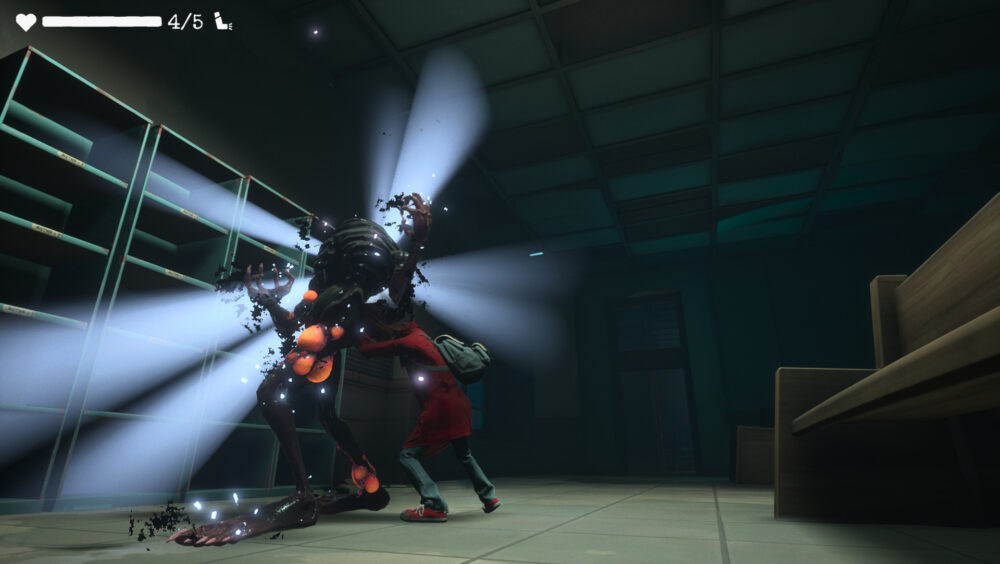
It could have had more impact
So far, so familiar, but there’s no denying GYLT is both mechanically- and technically-polished. That said, my biggest issue – irrespective of your familiarity with the genre – is that it doesn’t commit to the bullying theme hard enough to make it a truly standout feature.
I appreciate that GYLT uses cutscenes, scattered notes, and environmental storytelling to point out how bullying victims may perceive those that choose to ignore it as complicit with those that perpetrate it – but the common monster designs don’t feel particularly symbolic, the torch-based combat empowers you too quickly, the “best” ending feels shoehorned in and underdeveloped, and GYLT never manages to capture that sensation of being isolated, helpless, and terrified while surrounded by people entrusted to protect you.
The secondary narrative potentially explains away the Silent Hill-esque setting, but I’d have loved a game world that featured glimpses of a bustling parallel world just out of reach, or maybe other characters going about their lives within the environment utterly oblivious to the horror Sally and Emily are experiencing.

A beginner’s guide to survival-horror
Wrapping up, GYLT is still an easy 7/10 when you consider the narrative and polished gameplay in tandem with the stylised cartoonish visuals, creepy ambience, and decent voice work. If you’re new to the genre and looking for an accessible entry point, or maybe a parent looking for an entertaining game with moral lesson for your teenager, you can add a point to that score. On the other hand, if you’ve already tackled and enjoyed any of the more complex and less-forgiving games in the genre, you can knock a point off.
GYLT Review
Read more reviews by clicking on this link https://invisioncommunity.co.uk/category/review/

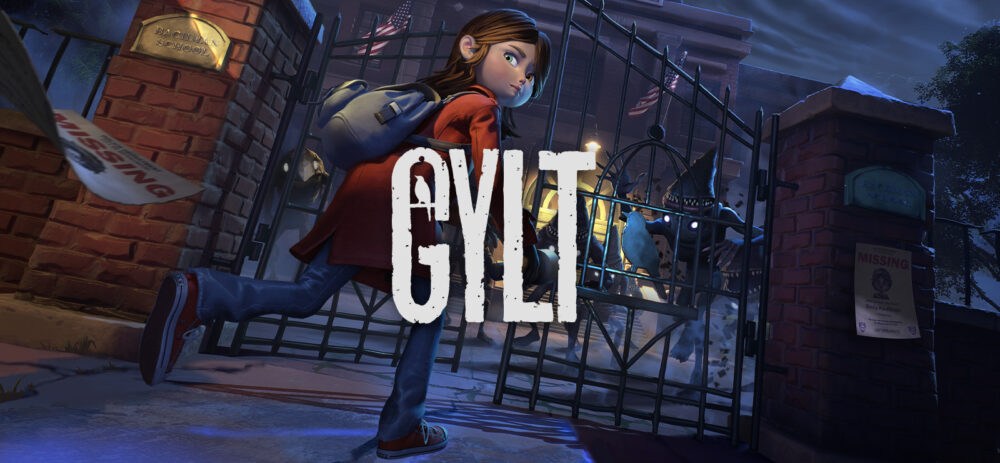






You must be logged in to post a comment.